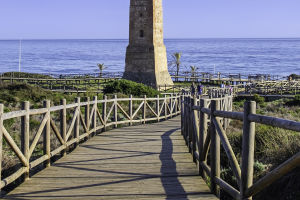The Swedish countryside is adorned with rows of rustic red houses, which are well-known icons of the country. If you ever wonder where the red color comes from, Falun in the province of Dalarna is the place to visit. This city is home to a mine that holds the answers to your questions.
The origin of the red house in Sweden dates back to the 16th century when the Falun mines began producing a rust-red pigment, now known as Falu Rödfärg (red paint).
Initially, Falun Red was a symbol of status and position, and it was typically only the middle class and above who painted their houses this red, emulating the red brick buildings of other European countries.
By the 19th century, many peasant houses were also painted in this color. Today, "Falun Red" is still very popular because its combination with wood creates a stunning attraction and because it has become a symbol of Swedish country life.
When you walk through the Swedish countryside, you will see cottages, wooden houses, barns, boats, letterboxes, and even dog houses all painted in Falun red. Although the mines in Falun are no longer in operation, the production of 'Falun Red' continues.
In its prime in the 17th century, the mine was Sweden's most massive industrial base, producing two-thirds of Europe's copper. A century later, the famous "Falun Red" paint was produced here. In addition to "Falun Red," there is also a huge sculpture of a goat and the tallest bridge in Sweden.
The primary attraction in Falun is the 'Great Pit,' a large pit where you can witness the color of several layers of earth. The mine was closed in 1992, and the site has been fenced off to prevent unnecessary accidents.
The recommended walk along the 'Great Pit' is about 1.7 kilometers long, and at each point, there is a board with information about the history of each part of the mine, which will give you a better insight into the mine's history.
The "Falun Red" paint also protects the wood from rotting, creating a protective layer on its surface. In 1719, a body was discovered underneath the mine in perfect condition, and after studying the body, the paint "Falun Red" was discovered.
Another story about the Falun mine is the legend of the goat called Kåre.
According to the tale, the goat appeared on the owner's doorstep with red clay on his horns, and the copper mine was then developed. Today, a sculpture of Kåre stands at the mine's entrance, and you can purchase Kåre souvenirs in the souvenir shop.
Visiting Falun is an excellent opportunity to experience the history of the region and learn about Sweden's culture.
The city has a variety of attractions, including museums, galleries, and gardens, in addition to the Falun mine. You can also take part in various outdoor activities such as hiking, fishing, and skiing.
The Falun mines in the province of Dalarna are the origin of the famous "Falun Red" paint that is still used today to decorate houses, barns, boats, and other wooden structures.
The mine has a rich history and was once the largest industrial base in Sweden. A visit to the mine's 'Great Pit' is a must-see attraction, where you can learn about the mine's history and witness the color of the layers of the earth.
The city of Falun is a great place to explore Sweden's culture and enjoy outdoor activities, making it a perfect destination for tourists.


